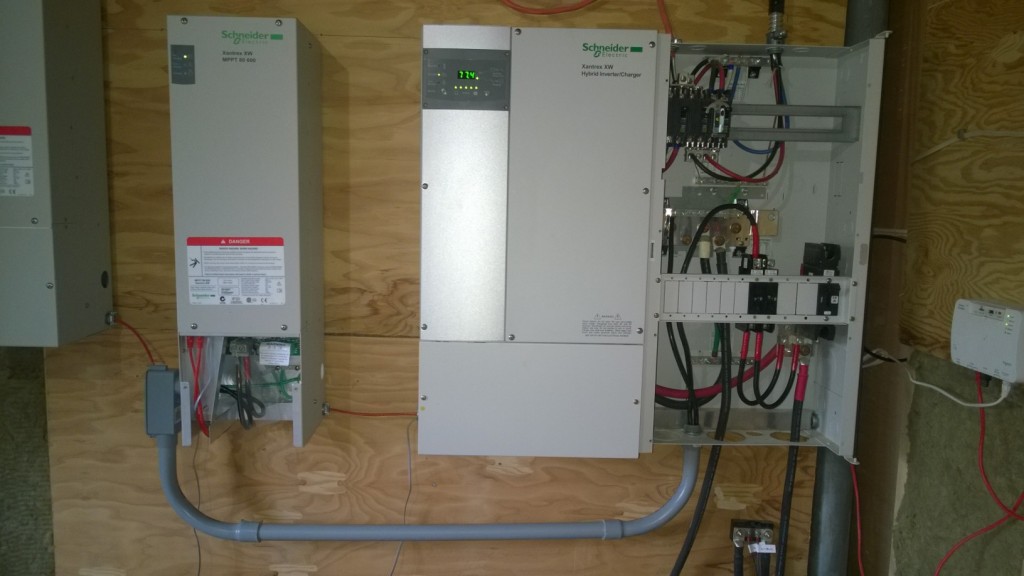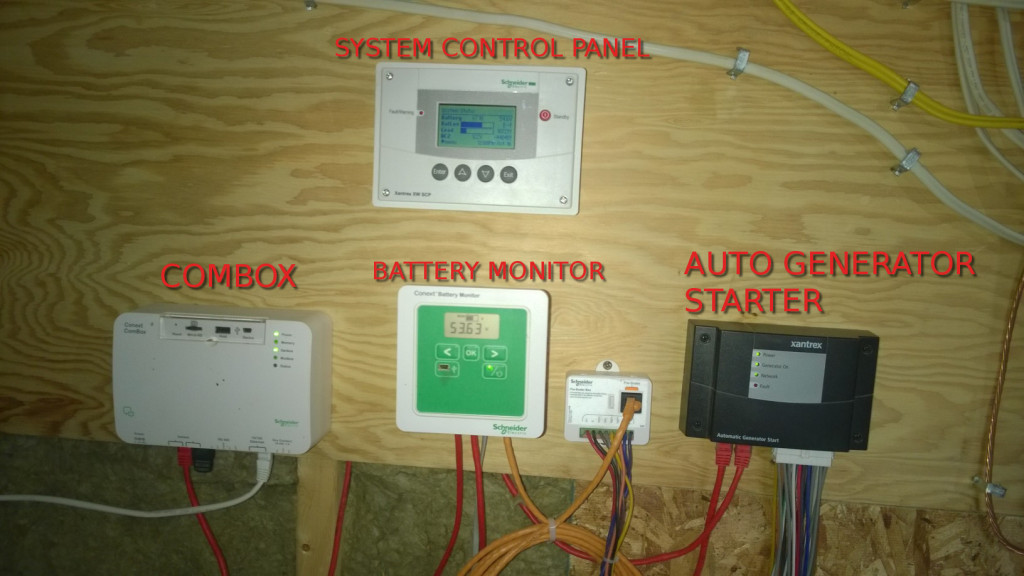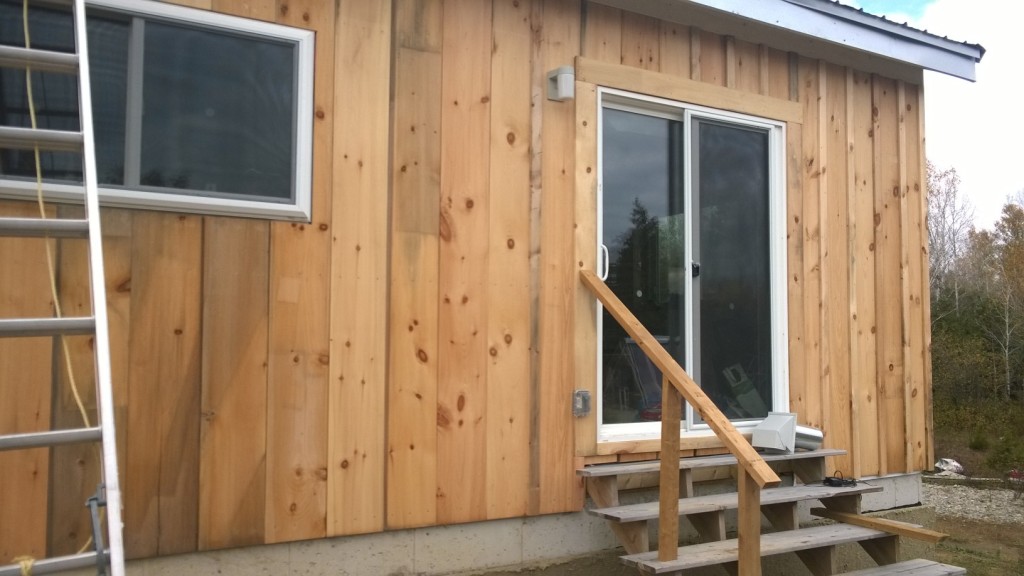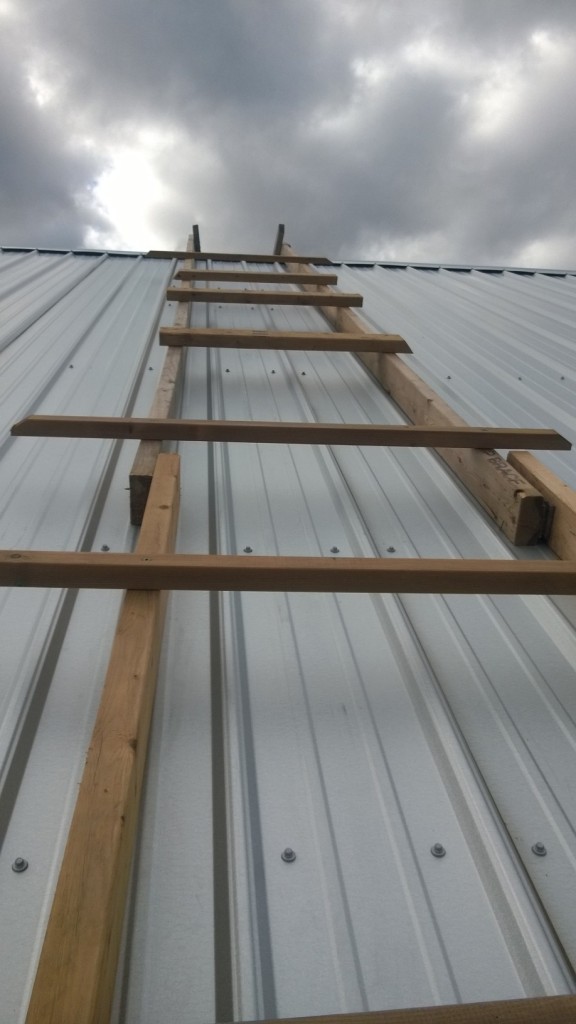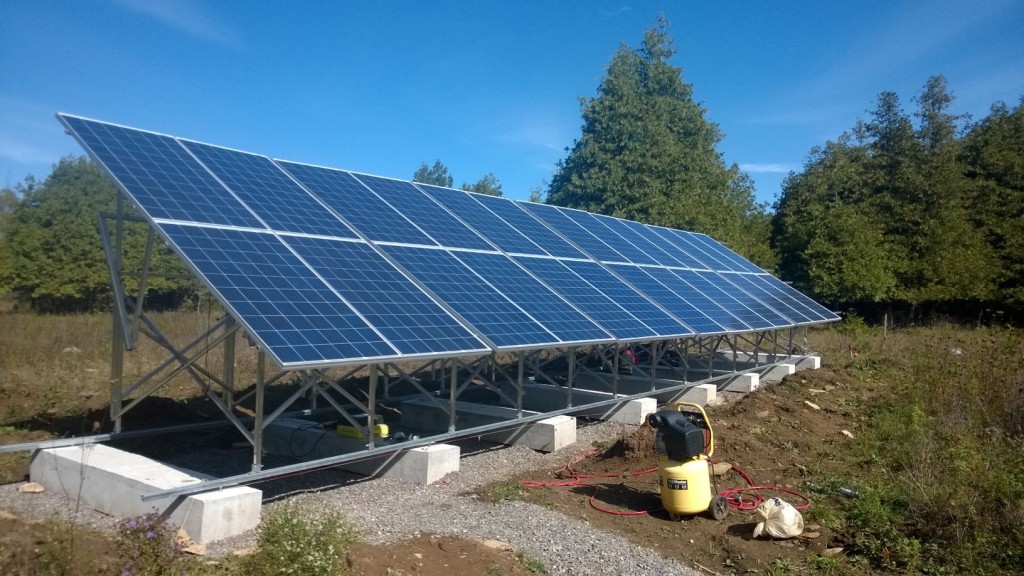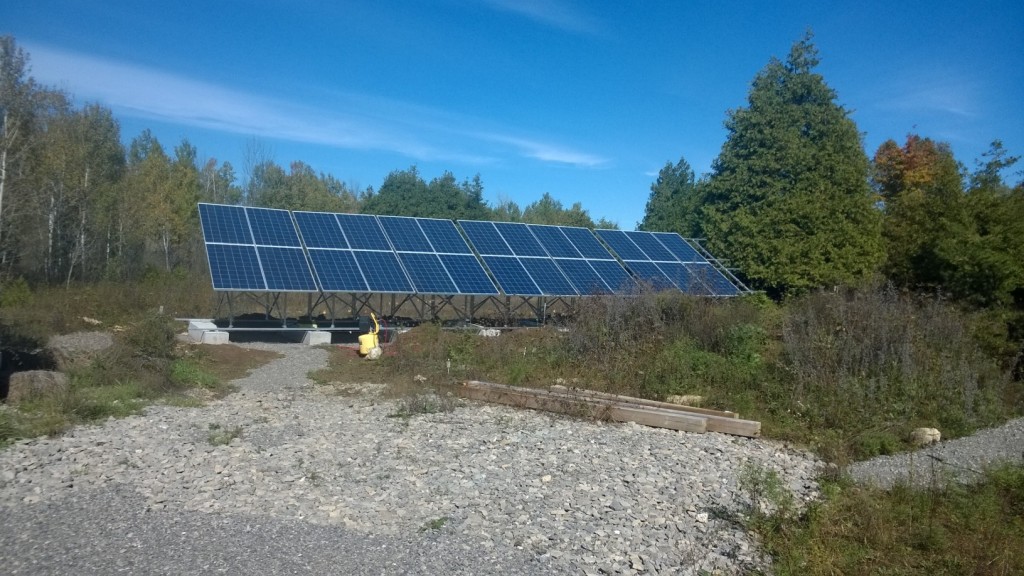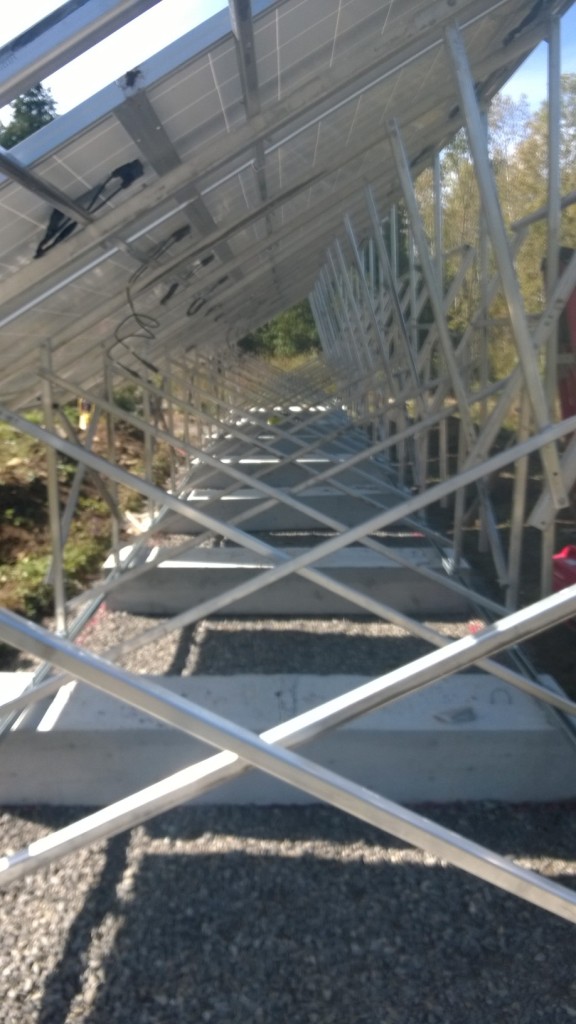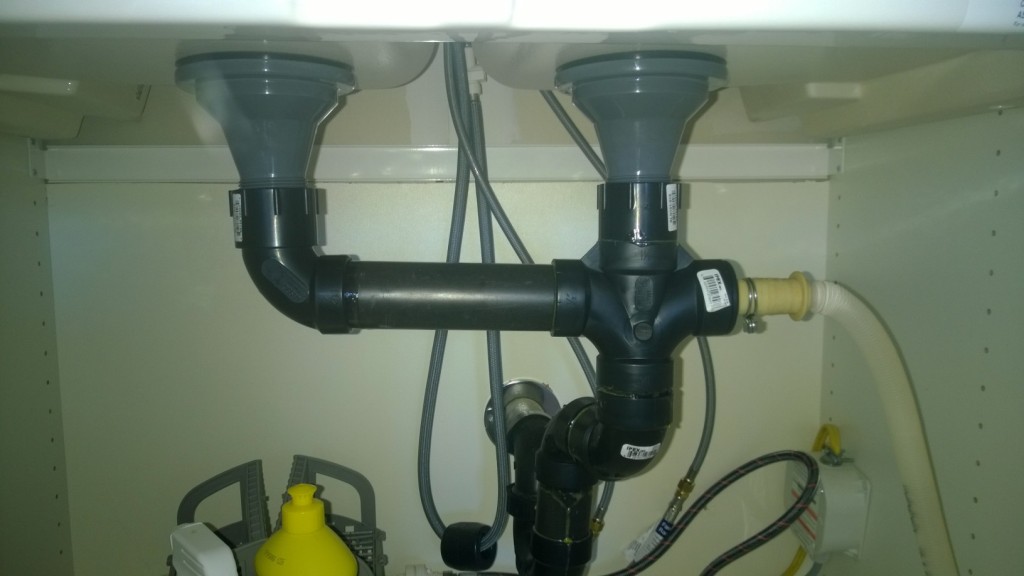Today was a pretty full day – this morning at the crack of dawn we had a concrete cutting contractor show up to help us out drilling two 6 1/2″ holes in the foundation for the HRV fresh air intake and stale air exhaust.
When dad was here visiting and helping out, we figured we would try to make these holes using a 1/2″ masonry bit to drill a series of holes in a circle through the basement wall, the idea being once we had enough holes drilled around the circle we could hit it with a sledgehammer and knock out the centre. The problem is, the basement walls are hard…ridiculously hard! We drilled three or four holes before we gave up on that idea, without having made much headway at all.
Some jobs are best left to the professionals with the right tools! The contractor was in and out of here in about an hour and most of that was just setting up to drill, and packing up.
He starts out by drilling a small hole in the foundation to attach the “arm” of his drill press.
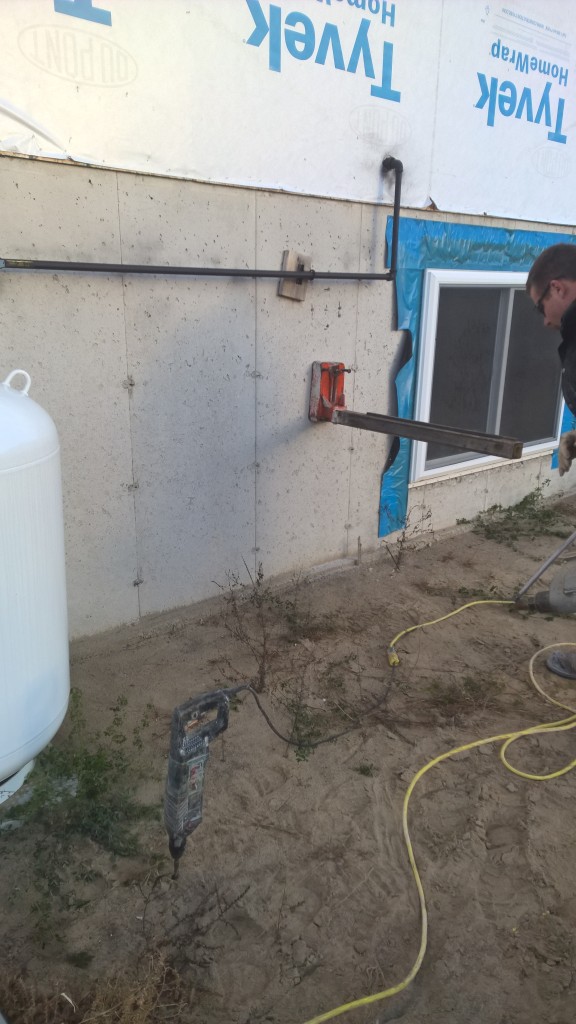
Next he puts the 6 1/2″ diamond core drilling bit on his rather industrial strength looking drill and sets everything into place.
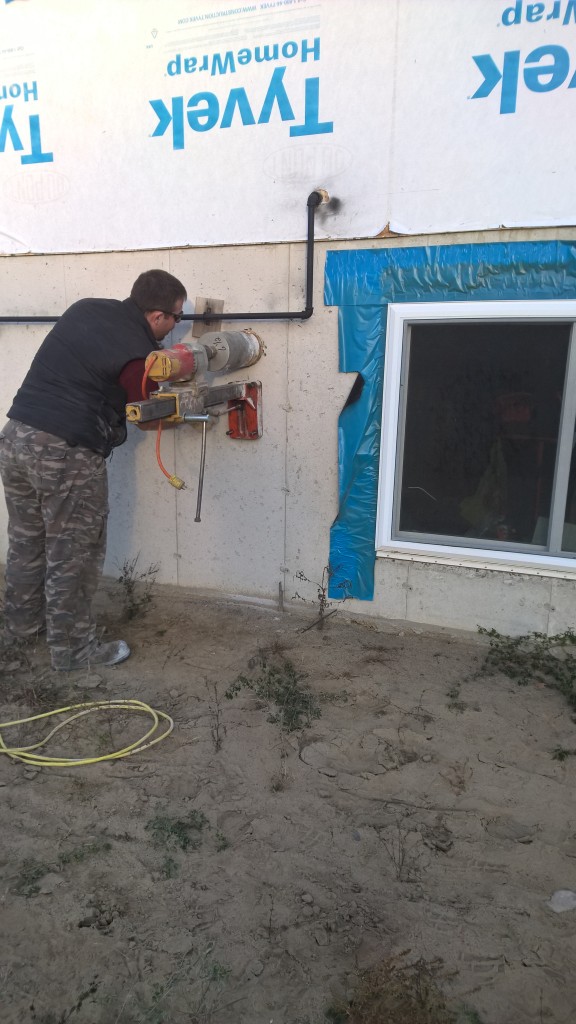
If you look closely at the above picture you can see a few of the 1/2″ holes dad and I drilled 🙂 Once the drill is positioned and the support arm is secured, all that’s left is to turn on his portable water supply (to keep the core bit cool while drilling) and start drilling.
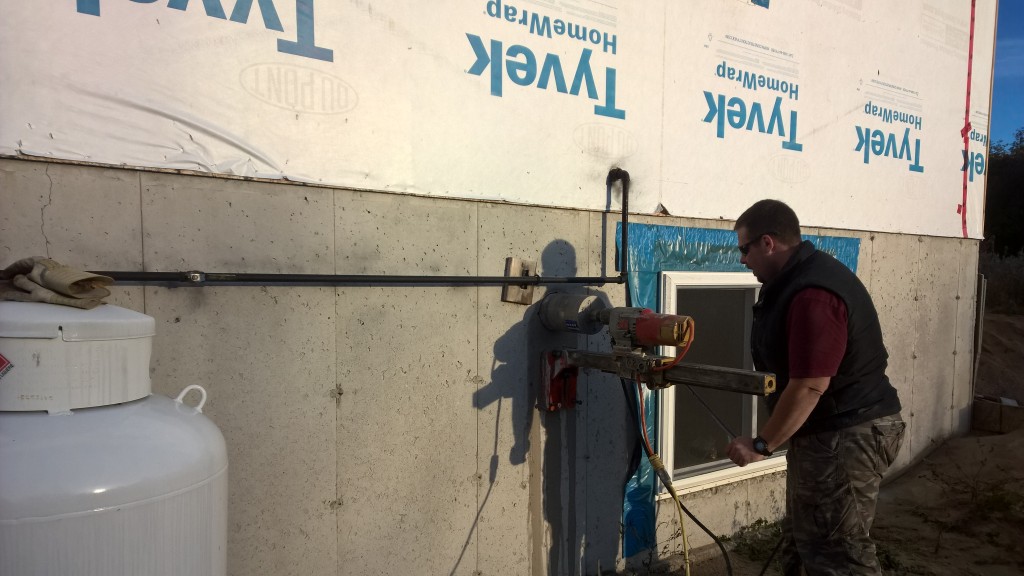
At the end of the process we were left with two concrete cylinders which I expect we will put in the garden or some such as decorative stones.
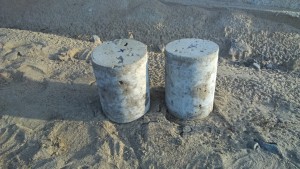
And, of course, two perfectly drilled 6 1/2″ holes through the basement wall.
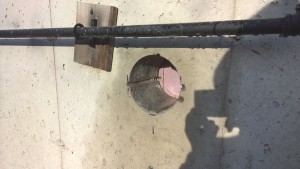
From there, all that was left to complete the final HRV connections was to attach the exterior hood for the stale air exhaust, and the fresh air intake grille. The fresh air intake grille I covered with an “anti-gust intake hood” which is recommended if you live in an area that gets sub-zero temperatures in winter.
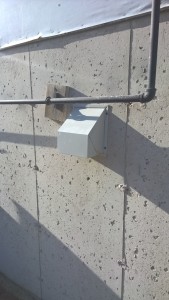
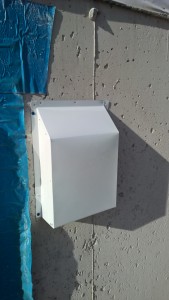
On top of that, I also got a bunch of wiring and parts needed to continue work on connecting the solar panels, so I will be continuing on more with that in the coming days! Hope you enjoyed the pictures and we’ll post again soon!
